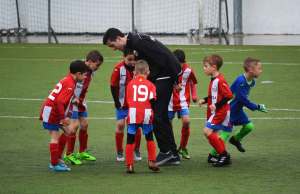
- Signs and symptoms of learning disabilities can change with age; it’s important we understand these differences in presentation among children and teens.
- Common learning disabilities among children include dyslexia, dysgraphia, dyscalculia, and processing issues.
- Those who struggle in these areas can struggle with reading, writing, working with numbers, and processing auditory and visual information.
- Teens experience the same difficulties, but they also present other symptoms: low self-esteem, rebellion, and conflict with parents.
- If your child or teen is struggling with school (or learning in general), be persistent in getting them the individualized help they need.
Being a child or teen with a learning disability can be challenging and frustrating, especially if the learning disability goes undetected. Therefore, we must work to understand the symptoms one might experience at different ages and get children and teens the proper assistance they require at school.

Symptoms of Learning Disorders in Children
Merriam Sarcia Saunders—Licensed Marriage and Family Therapist and ADHD Certified Clinical Services Provider—discusses the presentation of several common learning disorders in children:
- Dyslexia: Children with dyslexia struggle with reading. They might mix up letters, write them backwards, and spell words incorrectly. As a result, they might avoid reading. Additionally, they struggle with comprehension and fluency.
- Dysgraphia: Children with dysgraphia have trouble writing. According to Saunders, they may hold the pen funny and slouch when writing. Additionally, they might struggle to form letters and aren’t able to write for extended periods. Finally, these individuals may struggle to put much thought into their writing. They “may stare at empty paper not knowing how to begin and erupt in tears,” says Saunders.
- Dyscalculia: Children with dyscalculia struggle with another area: numbers. According to Saunders, they may have “difficulty with order of numbers, may get basic math concepts wrong, and may struggle with abstract concepts like time spans, measurements, days of weeks/months of year.”
- Processing: Finally, children might have processing issues, which is an error in the brain when it receives auditory or visual information. “Processing issues may manifest in mispronunciation of words, misunderstanding of something said, completely missing something said, writing the wrong thing copied, not comprehending something read or seen,” explains Saunders. “Children with processing issues may appear slow or not smart, which is not the case. Their brains simply need more time and/or they need data slowed down as it enters.”
Symptoms of Learning Disabilities in Teens
Teens with learning disabilities can experience the same symptoms above, but they also differ in several crucial ways. Saunders helps us to understand these differences:
“The primary difference between children and teens in all of these learning disabilities is that for a teen, if the issue had never been caught, then likely the teen has major self-esteem issues. They have pegged themselves as ‘stupid,’ likely do not do well in school, avoid reading, writing, math, and homework in general. They may act out by skipping class and not doing assignments, because it is too difficult, and they are not getting the necessary remediation. They may appear lazy and there is often conflict with parents.”
As parents, it is important to understand these specific symptoms of learning disabilities in teens. If you observe these symptoms combined with learning difficulties in certain areas, it might be beneficial to explore the possibility that your teen has a learning disorder. And to, of course, get your teen the individualized help they need in school
Get Your Child or Teen the Help They Need
If your child or teen is struggling with school (or learning in general), be persistent in getting them the help they need. As we mentioned earlier, most schools and educators offer specialized plans to those who struggle with a learning disability. But in order to implement that plan, one must first identify that they are struggling with a learning disorder or disability and need some extra help. Therefore, it’s important that kids, teens, and parents alike know the signs and symptoms of learning disabilities at different ages.













